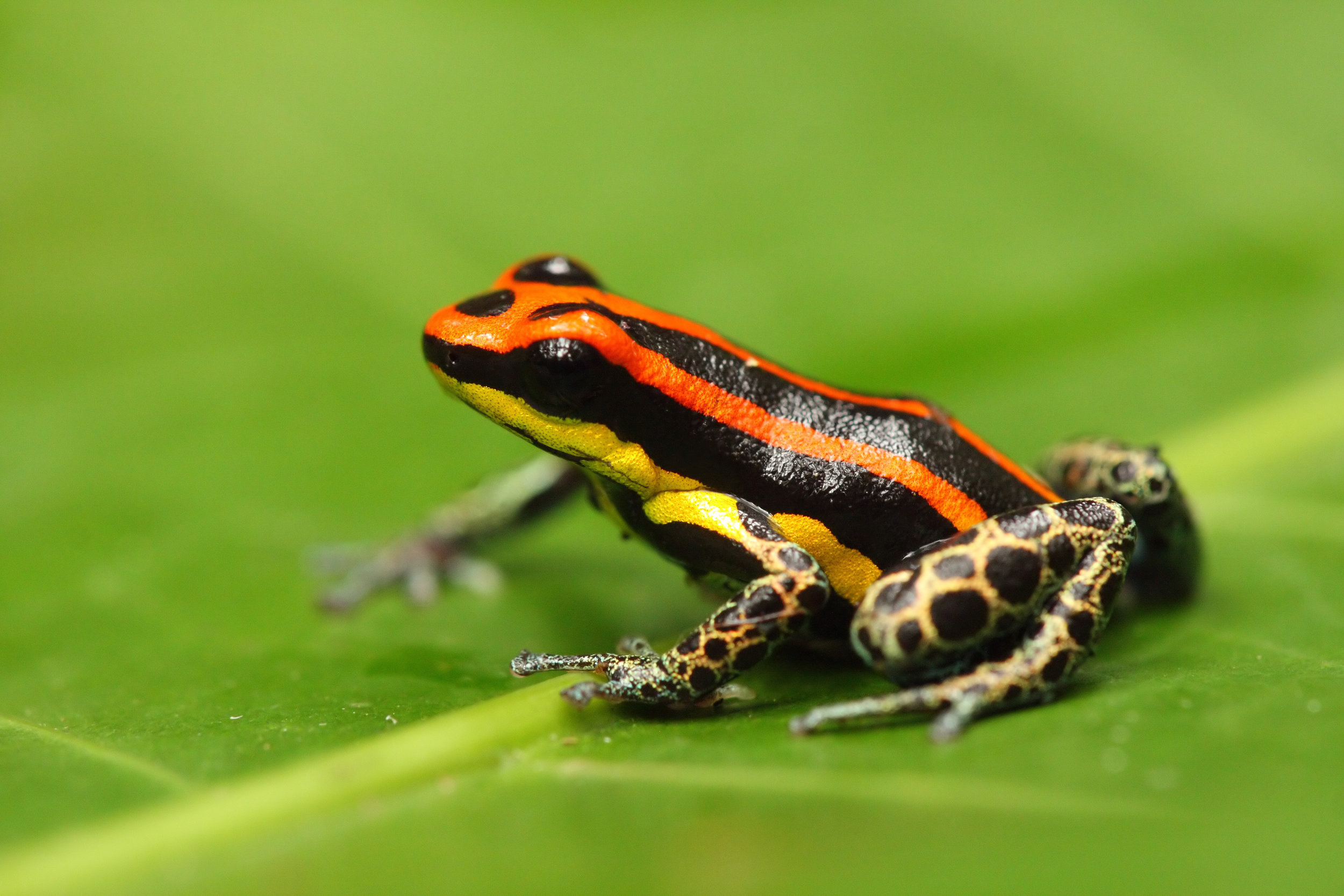Poison Dart Frog
"Poison Dart Frog" by Hans Soo Kim (pencil and digital)
“I wanted to challenge myself to try to draw something I wasn’t familiar with. They are cute as they are deadly, and so many different variation of colors attracted my attention.”
There are more than 100 species of this type of frog.
Your purchase is helping Expedition Art and Saving Species purchase land in Sumatra! Learn more about the project.
Habitat
Poison dart frogs live in the can be found in the wet, tropical rainforests of Central and South America. Their coloring can be yellow, gold, copper, red, green, blue, or black, or a combination of these colors.
Family Life
Many species of poison dart frogs are very attentive parents. The females will lay 30 to 40 eggs encased in a jellylike substance on the forest floor. When they hatch, the tadpoles will squirm onto the parent’s back, where they will be safe from predators until the parents find a suitable small, safe pool of water for them to continue their metamorphosis.
Lifespan
A typical life span is three to fifteen years.
Hunting Habits/Diet
Poison dart frogs are insectivores, and eat ants and other small insects that they can hunt along the forest floor. It is believed that the toxins in the frogs’ bodies may be related to the type and amount of insects that they consume.
Population
The habitat of poison dart frogs is remote and difficult to reach, so accurate population monitoring is a challenge.
Fun Facts
Poison frogs are commonly called “poison arrow” and “poison dart” frogs due to native Indian tribes reportedly rubbing their arrow tips on the frogs' backs before hunting.
Most poison dart frogs are not toxic.
Within their skin, they store natural venom that can paralyze, or even kill, a predator. A single "golden poison frog" has enough poison to kill 10 grown men.
Why Are They Endangered?
Due to their toxicity, poison dart frogs have only one natural predator --a species of snake that has developed a resistance to their venom. Far more detrimental to the species is the destruction of their habitat. Many poison dart frog species are facing a decline in numbers, and some have been classified as endangered due to the loss of their rainforest habitat.
Status
Endangered


